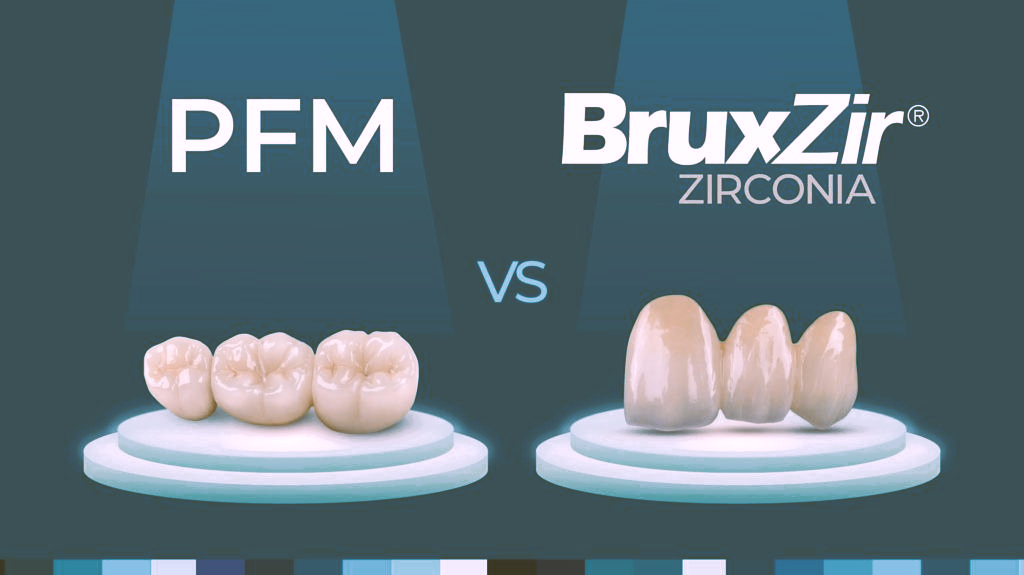The Future of Dental Crowns: Why Choose Zirconia or Ceramic Over PFM?
Introduction
When it comes to dental crowns, advancements in technology have provided patients with several options. The traditional porcelain-fused-to-metal (PFM) crowns, once the standard, are now being overshadowed by modern alternatives like zirconia and ceramic crowns. Understanding the differences and advantages of zirconia and ceramic crowns over PFM crowns can help you make an informed decision for your dental health.
The Basics: What Are Dental Crowns?
Dental crowns are caps placed over a tooth to restore its shape, size, strength, and appearance. They are often used to protect weak teeth, restore broken teeth, or cover dental implants. The three main types of crowns are PFM, zirconia, and ceramic.
Porcelain-Fused-to-Metal (PFM) Crowns
PFM crowns have been widely used for decades. They consist of a metal alloy base with a porcelain overlay, combining the strength of metal with the natural appearance of porcelain. However, despite their long-standing use, PFM crowns have several drawbacks:
- Aesthetic Limitations: The metal base can sometimes show through the porcelain, especially at the gum line, giving a darkened appearance.
- Wear on Opposing Teeth: The hardness of the porcelain can cause significant wear on the opposing natural teeth.
- Allergic Reactions: Some patients may experience allergic reactions to the metals used in PFM crowns.
- Longevity Issues: Over time, the porcelain can chip or crack, and the metal can corrode, leading to potential failure of the crown.
Zirconia Crowns: Strength and Aesthetics
Zirconia crowns are made from zirconium dioxide, a strong, biocompatible ceramic material. They offer several advantages over PFM crowns:
- Superior Strength: Zirconia is incredibly strong and durable, making it an excellent choice for crowns that need to withstand significant chewing forces.
- Natural Appearance: Zirconia crowns are more translucent and can be color-matched to your natural teeth, providing a more aesthetically pleasing result.
- Biocompatibility: Zirconia is less likely to cause allergic reactions or irritate the gums, making it a safer option for many patients.
- Minimal Wear on Opposing Teeth: Zirconia crowns are less abrasive than porcelain, reducing the risk of wear on the opposing natural teeth.
Ceramic Crowns: The Aesthetic Choice
Ceramic crowns, often made from materials like lithium disilicate, are known for their excellent aesthetic qualities. Here’s why they stand out:
- Highly Aesthetic: Ceramic crowns can be precisely color-matched to your natural teeth, offering an unparalleled natural appearance. They are particularly popular for front teeth restorations where appearance is crucial.
- Metal-Free: Being entirely metal-free, ceramic crowns eliminate the risk of allergic reactions and do not cause dark lines at the gum line.
- Translucency: The translucency of ceramics closely mimics that of natural tooth enamel, providing a lifelike appearance.
Why Choose Zirconia or Ceramic Over PFM Crowns?
1. Aesthetic Superiority
Zirconia and ceramic crowns offer a more natural look compared to PFM crowns. The absence of metal means no dark lines at the gum line, and their translucency mimics the natural teeth better.
2. Enhanced Durability and Strength
Zirconia crowns, in particular, are incredibly durable and can withstand the pressures of chewing and grinding better than PFM crowns. This durability reduces the likelihood of fractures and the need for replacements.
3. Biocompatibility
Both zirconia and ceramic crowns are highly biocompatible, reducing the risk of allergic reactions and gum irritation. This makes them suitable for patients with metal allergies.
4. Preservation of Natural Teeth
Zirconia crowns cause minimal wear on the opposing teeth compared to the harder porcelain used in PFM crowns. This helps in preserving the integrity of the natural teeth.
Conclusion
Choosing the right type of dental crown is crucial for both functionality and aesthetics. Zirconia and ceramic crowns offer significant advantages over traditional PFM crowns, including superior aesthetics, strength, biocompatibility, and better preservation of natural teeth. Consult with your dentist to determine which option is best for your specific dental needs.
By understanding the benefits of zirconia and ceramic crowns, you can make a more informed decision for a healthier, more beautiful smile.

